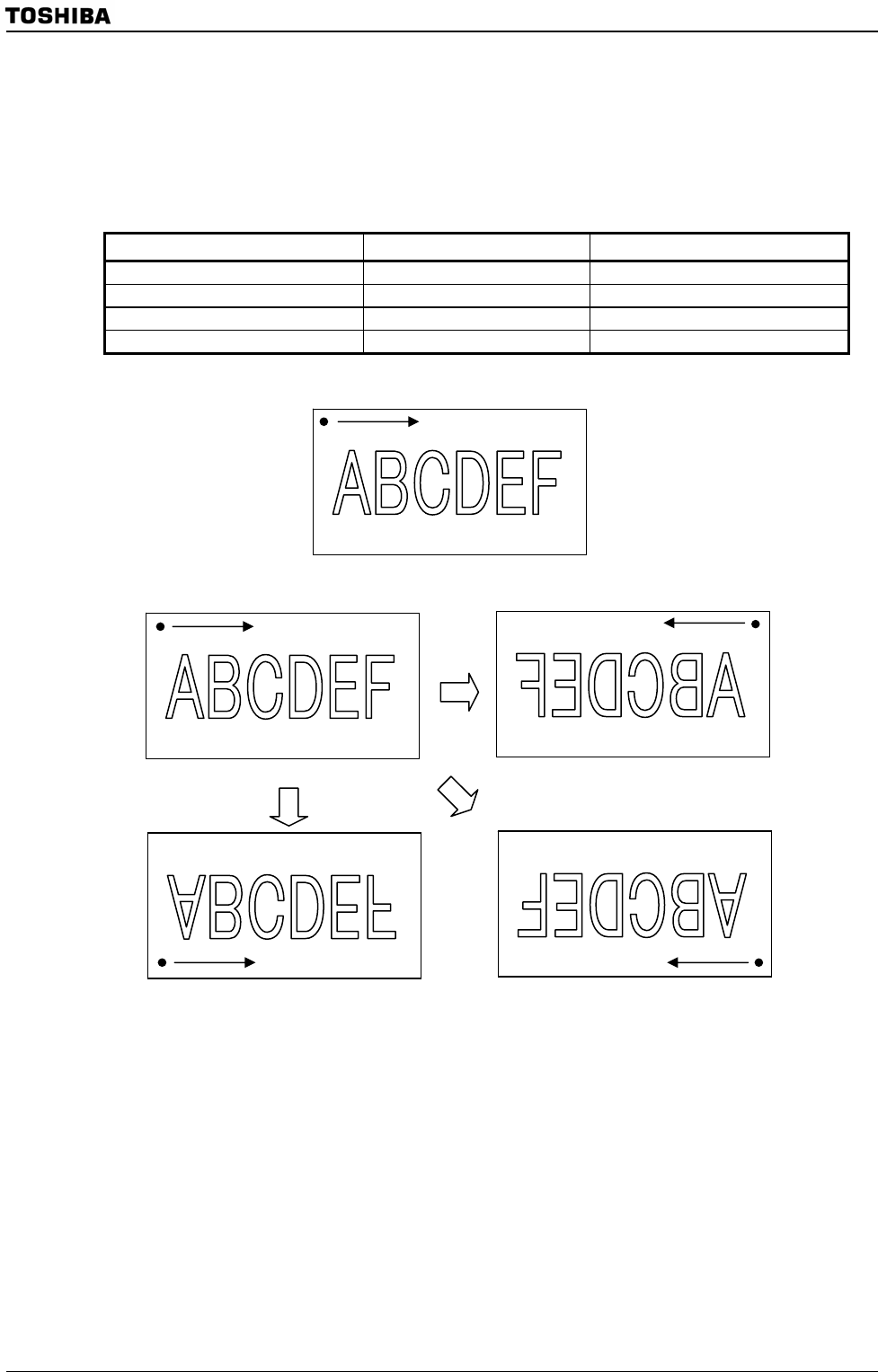
TMP92CZ26A
92CZ26A-558
3.19.5.2 Display Data Rotation Function
When display RAM data is output to the LCD driver (LCDD), the data output
direction can be automatically rotated by hardware to meet the specifications of the
LCDD (or LCD module) to be used.
Table 3.19.2 Operation Conditions
Item Vertical/Horizontal Flip Function 90-Degree Rotation Function
Display size 320 × 240
320×240 240 × 320
Color mode 64K colors (16 bpp) 64K colors (16 bpp)
Supported LCDD TFT, STN TFT, STN
Display RAM Internal RAM, external SRAM Internal RAM, external SRAM
1. Horizontal and Vertical Flip Function
Display RAM image
Normal display Horizontally flipped
Vertically flipped Horizontally and vertically flipped
The display RAM image shown above uses the data scan method for the normal
display screen so that data is read from the display RAM and written to the LCDD from
left to right and top to bottom.
The data on the LCD screen appears as “horizontally flipped” if data is read from the
display RAM from left to right and top to bottom and written to the LCDD from right to
left and top to bottom.
Likewise, the data on the LCD screen appears as “vertically flipped” if data is written
to the LCDD from left to right and bottom to top, or as “horizontally and vertically
flipped” if the data is written to the LCDD from right to left and bottom to top.
The horizontal and vertical flip function enables the output of display data to meet
the specifications of each LCDD without the need to rearrange the display RAM data.
In other words, the screen display can be flipped horizontally and vertically without


















